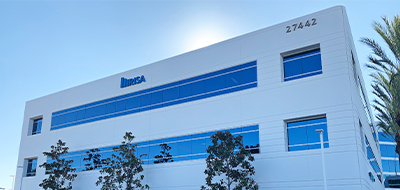In structural engineering, few design challenges are as rewarding—or as unforgiving—as the tall building. While gravity systems and code checks form the backbone of any structural project, once a structure rises beyond ten or fifteen stories, a shift occurs. Wind and seismic forces begin to dominate. Story drift and torsional irregularities become non-negligible. Load paths grow increasingly indirect. And design decisions, if not carefully made early on, can have exponential consequences higher in the structure.
Tall buildings are not simply “bigger” versions of short ones. They behave differently. And understanding those differences is essential for any engineer working in an urban environment where building vertically is often the only viable path forward.
Modeling for Reality, Not Just Code
The foundation of any successful tall building design lies in the model—its assumptions, resolution, and degree of abstraction. Many engineers begin with simplified representations: rigid diaphragms, idealized connections, and linear material properties. This is practical and often sufficient for early design phases. But as the building increases in height and complexity, those assumptions may start to mask critical behaviors.
Semi-rigid diaphragm modeling, for instance, allows engineers to capture in-plane flexibility of floor systems—especially important in buildings with irregular cores, open floor plans, or transitions in structural layout. Similarly, defining story levels within the model enables tracking of drift, interstory rotation, and lateral load distribution with greater fidelity. These aren’t just nice-to-haves; they provide the insight needed to mitigate issues like torsional response and soft-story behavior before they become structural liabilities.
Perhaps most critically, tall building models must reflect the interaction between vertical and lateral systems. Load paths are rarely clean in these structures. Core walls may carry lateral forces at upper levels but transition to moment frames or braces as you approach the foundation. Transfer slabs, podium levels, and outrigger systems all introduce discontinuities that demand careful modeling—both in terms of geometry and boundary conditions.
The Lateral System Isn’t Just a Check—It’s the Structure
In low- and mid-rise buildings, lateral systems are often treated as something to be “added in” after the gravity system is laid out. But in tall buildings, the lateral system is the structure. It governs story stiffness, governs drift, and, increasingly, governs cost and constructibility.
Engineers must think in terms of system performance. For example, a dual system combining shear walls and moment frames isn’t just about redundancy—it’s about controlling deformation in both translation and rotation. Similarly, outriggers aren’t just for show; they create coupling between core and perimeter columns that dramatically affect the building’s overall stiffness and overturning resistance.
These systems also require thinking beyond code minimums. In seismic regions, performance-based design approaches are often used to evaluate nonlinear behavior, residual drifts, and component-level damage under realistic ground motions. In wind-dominated buildings, serviceability limits—especially acceleration—often govern floor framing and mass distribution more than strength requirements do.
In either case, engineers must move fluidly between prescriptive checks and performance goals, adjusting the model’s complexity to the questions being asked.
Foundations: The Ground Truth of Tall Design
The challenges of tall building design don’t end at the base—they deepen. High axial loads, large overturning moments, and sensitivity to settlement mean the foundation system must be carefully coordinated with the superstructure above. This is particularly true in mixed-soil conditions, urban infill sites, or where a tall building is built atop a podium or shared basement structure.
Mat foundations are common, but rarely simple. The interaction between soil stiffness and structural rigidity often necessitates soil-structure interaction (SSI) modeling—either through subgrade reaction methods or more advanced finite element approaches. Pile foundations, where used, must be sized not just for vertical loads but for lateral stiffness contributions and uplift resistance.
What’s often underappreciated is the feedback loop between the foundation and the superstructure. A foundation that settles asymmetrically or rotates under load can produce drift and torsion effects that propagate up the building. In this way, foundation design cannot be an isolated final step—it must be part of an iterative modeling cycle.
Integration is No Longer Optional
What separates successful tall building projects isn’t just better numbers—it’s better coordination. The intersection of architectural intent, structural efficiency, and construction logistics becomes tighter as buildings grow taller. Structural engineers are increasingly asked not only to validate a design, but to anticipate how it will perform under a range of conditions—both during construction and throughout its lifespan.
This makes integrated design tools, whether in BIM platforms or specialized analysis software, critical. It also calls for integrated thinking: considering how lateral load paths affect architectural layouts, how construction sequencing affects temporary stability, and how material selections affect long-term behavior.
Ultimately, tall building design is about more than resisting loads. It’s about understanding how structure, motion, material, and architecture all interconnect—at a scale where the margin for error is thin, and the rewards for doing it right are sky-high.

Final Thoughts
Tall building design is a different beast. The physics change, the expectations rise, and the consequences of a bad assumption become more severe. But it’s also where structural engineering shines—where we combine deep technical understanding with the vision to shape the skyline.
As tools and codes evolve, and as materials like mass timber and composite systems push further into tall territory, engineers will be challenged not just to model buildings accurately, but to understand how they behave as integrated, dynamic systems.






